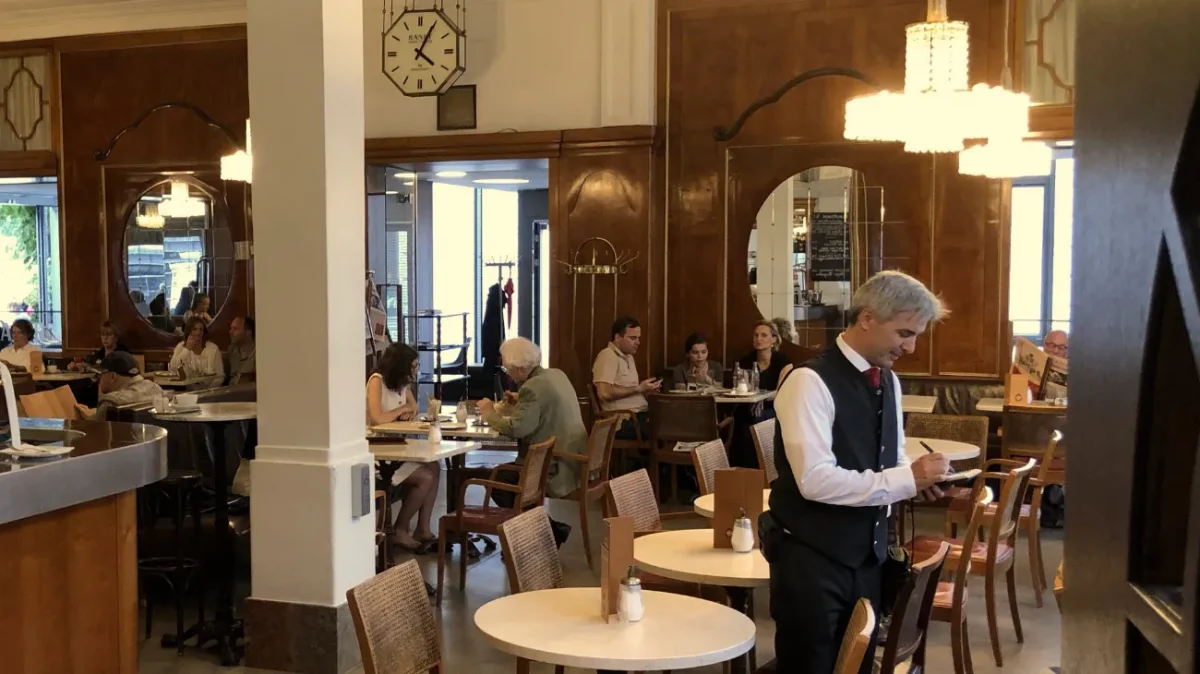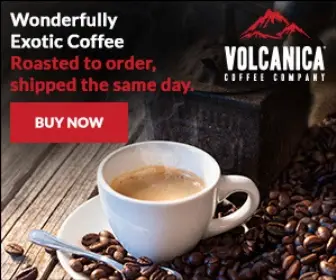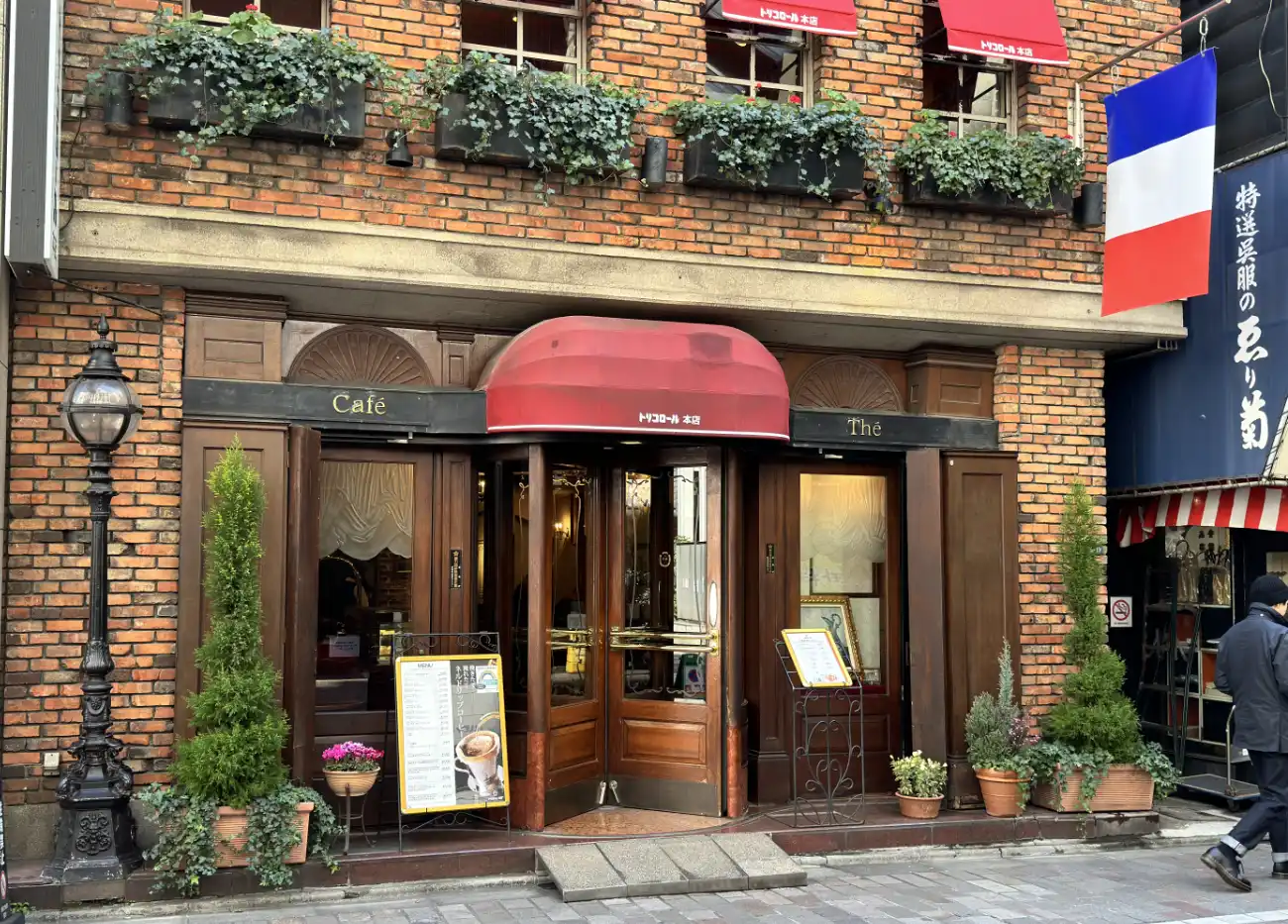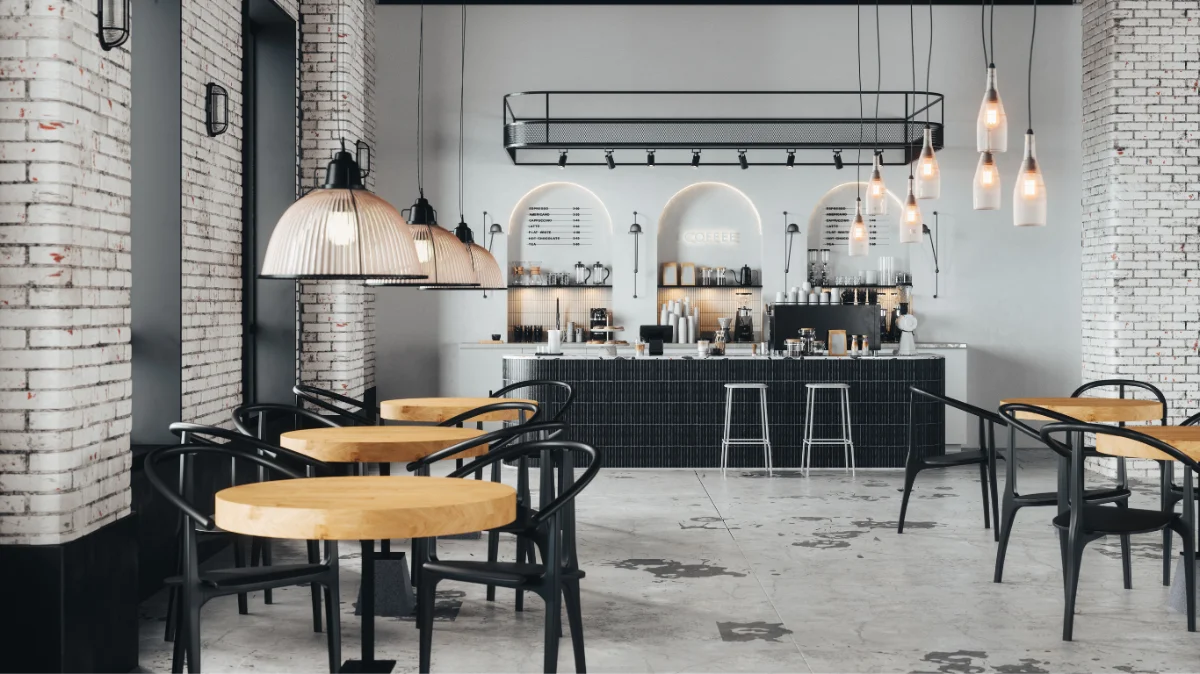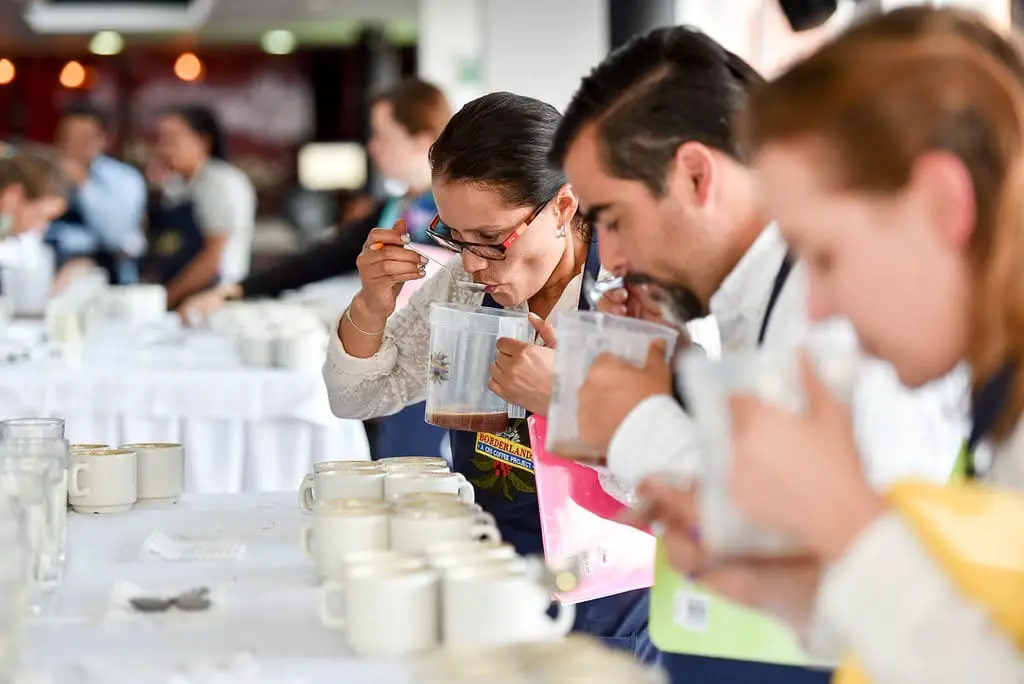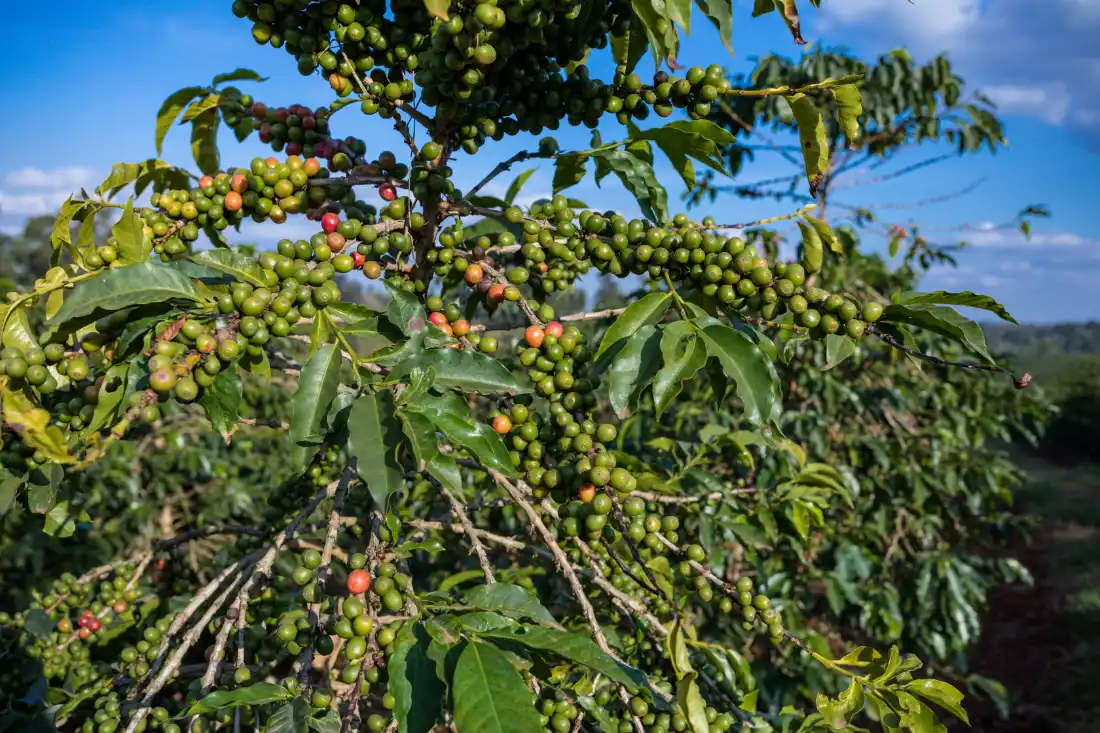Austria – influencing coffee culture for over 300 years
Austrian coffee is more, much more than Viennese Coffee. Read on to get a complete overview.
Even a casual visitor will soon notice the importance of coffee in Austria. Austria is a small country in the center of Europe that has contributed quite a lot to the development of modern coffee culture in Europe and far beyond. You will find many coffee shops around the world carrying names like Café Mozart, Vienna Coffee House relating to Austria. Even the American coffee chain Blue Bottle Coffee borrowed its name from one of the first Viennese coffee houses, the “Zur blauen Flasche” (blue bottle) and established back in 1683. However, there is a dispute which Viennese coffee house was actually the very first.
Austria was formerly the center of the Habsburg Empire, tucked away in the alps and having only about the same number of inhabitants as New York City. But as little as this country is, it has had a significant influence on the development of European coffee house culture over the last 330+ years.
Are you a first-time visitor to Austria or a newly arrived resident?
To make the most of your stay and avoid embarrassment, it’s a good idea to familiarize yourself with some local customs and peculiarities. Trying to get some coffee in a traditional Austrian café can be challenging. The choices offered will differ from back home – wherever that may be. To know how to order coffee in Austria is a survival skill.
Facing the challenge to order correctly in a Viennese coffee house
Don’t make the mistake of ordering “a coffee” in a classic café. You will get nothing more than a blank stare by your waiter. If he is in a good mood, he may hand you a menu with a list of anywhere between ten and twenty different preparations. Some of these may resemble a coffee drink from home to some extent, but most of the choices will be different.
And don’t confuse your waiter with “Vienna Coffee”. This might exist somewhere else, but not in Austria. It is certainly a good idea to memorize the names in German, at least for your favorite choice. This will help to make your Austrian coffee experience a pleasant one.
What’s so special about coffee in Austria?
One thing you will notice is that most of their coffee preparations do not come pre-sweetened. Sugar dispensers are on your table and how much you want to stir into your coffee is your own choice.
Another thing is the generous use of whipped cream. The German word for it is “Schlagobers”. Mind you, it’s freshly made whipped cream, the real McCoy. If you grew up on the spray can version you will be in for a revelation and not be able ever to go back to that artificial stuff.
There are also no flavored syrups, no soy lattes, no half and half in Austrian coffee. If you crave those you will have to go to the globally operating coffee chain that you always wanted to get away from. Yes, they are even in Austria and slowly gaining traction.
Several coffee preparations are fortified and flavored with a little alcohol. A shot of rum, sliwowitz (prune brandy), cherry brandy or orange liqueur will add a whole new level of flavors.
Mokka, the basic unit for most of Austrian coffee preparations
At the core of all Austrian coffee preparations is the “Mokka”. It is a strong black coffee which in the past was filtered in a special coffee pot called Seihkanne or Karlsbader Kanne. In this Wikipedia article, you can find some images of such a pot, the explanation is in German, however. Nowadays, for speed and convenience, most coffee houses prepare the Mokka in an espresso machine.
It is like an Italian espresso, but not exactly the same as it is prepared with a little more water. Mokka is pure coffee and does not contain any chocolate at all. Traditionally, Austrian coffee houses used beans from Yemen or Ethiopia. Some coffee houses are proud of their own blends. However, these days many just use commercial blends from Meinl, Illy, Segafredo, etc.
The Mokka was named after a port city in Yemen, once a major center for the coffee trade. The association of Mokka or Mocha with chocolate originated from a natural flavor component of coffee beans from Yemen hinting of chocolate.
Just as a side note for clarity, the term Mokka is sometimes also used for Turkish coffee, which is a totally different animal.
How to order coffee in a Viennese coffee house like a local
Kleiner Schwarzer – Grosser Schwarzer
Kleiner Schwarzer – Grosser Schwarzer
Looks like an espresso, but it is a Mokka, which is also called “Kleiner Schwarzer” = little black one for a single. To get a double, ask for a “Grosser Schwarzer” = big black one.

Kleiner Brauner – Grosser Brauner
If you like your coffee with milk or cream, order a “Kleiner Brauner” or “Grosser Brauner” = little or big brown one. This is just a Mokka served with milk or cream on the side which you can add yourself as you like. You have full control of the proportion that’s right for you.
Verlängerter
A Mokka with hot water added, similar to an Americano. Verlängert means extended.
Melange (sometimes also called Wiener Melange)
This is Mokka and steamed milk in equal proportions and a little milk foam on top. You can have a little cocoa powder sprinkled on top if you like. This preparation is like a Cappuccino but uses milder coffee beans.
Franziskaner
Quite similar to Melange, but instead of milk foam there is Schlagobers (whipped cream) on top.
Kapuziner
A Mokka with a little cream added. The cream is not just any kind of coffee creamer but real cream, also used for whipping. The brown color is reminding of the cloak of a Kapuziner monk, thus the name.
Einspänner
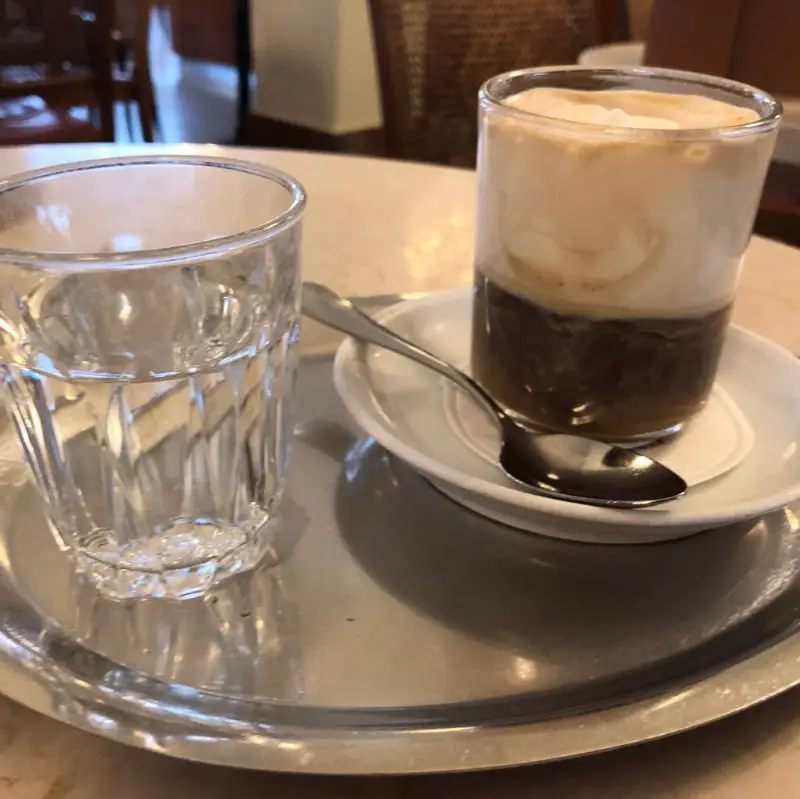
Einspänner
A Grosser Schwarzer (double Mokka) topped with a generous amount of Schlagobers and served in a glass with a handle. This is a very traditional drink and was very popular with coachmen of horse-driven carriages. You still can see many of them in Vienna as they are a popular tourist attraction.
Fiaker
Another popular drink with coachmen, similar to the Einspänner, but fortified with a shot of Rum, Sliwowitz or Cherry Brandy. This drink will warm you up very well in wintertime. A fiaker is a carriage with two horses.
Kaffee verkehrt (inverted coffee)
Kaffee verkehrt (inverted coffee)
This one is like a Latte macchiato. Hot milk is topped with milk foam, and finally, a Mokka is added to create a pretty drink with three layers, served in a tall glass.

Maria Theresia Kaffee
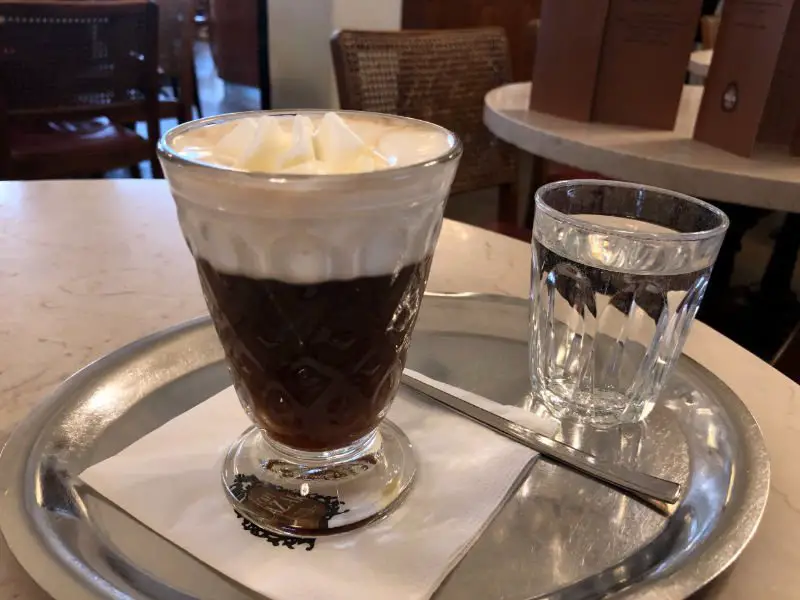
Maria Theresia Kaffee
Looks like an Einspänner served in a different glass. But when you have your first sip, you’ll know the difference.
A double Mokka with a shot of French orange liqueur and topped with an ample amount of Schlagobers. Supposed to have been a favorite of the Empress Maria Theresia. And it is also my personal favorite.
A new coffee craze in NYC but of Austrian origin
A few years ago, a coffee shop in New York City, the Round K, reinvented this preparation and made it very popular on Instagram under the hashtag #eggcappucino. Some of you might shudder at the thought of putting a raw egg yolk into your coffee. This certainly is not for everyone. Be sure to use only top-quality eggs. In many countries, it is advisable to avoid supermarket eggs because of the risk of salmonella infection.
The current narrative is that it is a Vietnamese specialty. This may be the case, but it existed in Austria long ago when there was still an Emperor around, and Russia still had a czar. The names of the two preparations below still reference those long-gone times. Historically, they are clearly part of typical Austrian coffee.
Kaisermelange
Raw egg yolk with some honey stirred in and gently added on top of a double Mokka.
ZarenkaffeeSimilar to Kaisermelange, but instead of honey, sugar is added to the raw egg yolk, beaten until foamy, then gently added on top of a double Mokka.
Which are the best Cafés in Vienna, Graz, and Salzburg?
In Vienna alone, you can choose between more than 2,400 cafés, from the very traditional ones with a history of over 300 years to small and casual espresso bars. If you are not ready to explore the Austrian coffee culture yet, you can even go to a Starbucks to enjoy mediocre coffee and sub-par food. It is beyond me, but there are at least 15 Starbucks in Vienna at the time of writing this.
In most Austrian coffee houses, food is as important as the coffee itself. Food can be anything from breakfast items, light lunch menus to wonderful cakes and pastries. In many cases, the name of the café will give away its concept and focus. If you read “Konditorei” or “Hofzuckerbäcker”, you can expect an incredible range of delicious cakes, strudels, and other sweets.
Any recommendation for a real coffee house that I give you here will be unfair to hundreds of other superb cafés that remain unmentioned. I encourage you to venture out and discover your personal favorite café.
Cafés in Vienna
Café Schwarzenberg
Established in 1861, Café Schwarzenberg survived two wars and 10 years of Soviet occupation and can still be found at a central location. It succeeded in preserving the typical feel and atmosphere of a traditional Vienna Café for more than 150 years.
You can enjoy breakfast, classic Vienna cuisine, including the famous Wiener Schnitzel, and seasonal specialties from 7:30 to 24:00. And of course, they serve a full range of cakes, strudels, and pastries as well. They go extremely well with their Vienna-style coffee preparations.
Café Schwarzenberg is a recommended destination for coffee lovers as it uses outstanding quality organic Arabica coffee beans, grown at high altitudes in Honduras and roasted to perfection.

Kärntner Ring 17, 1010 Wien
Tel. + 43/1/512 89 98
office@cafe-schwarzenberg.at
You can also check their website for directions.
Café Hawelka
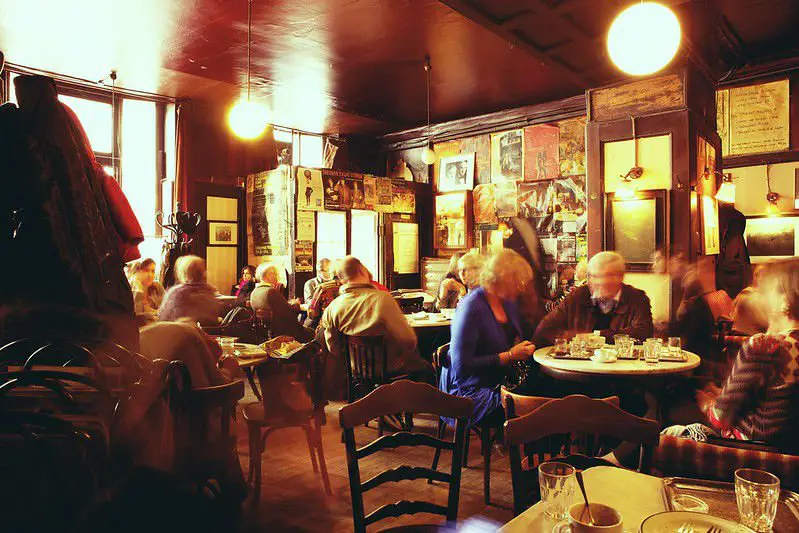
Cafe Hawelka is a legendary coffee house in Vienna and a must-be destination. In its history of more than 80 years, it has seen many famous guests from all over the world, including Arthur Miller, Peter Ustinov, and Andy Warhol.
Leopold and Josefine Hawelka opened the Café in 1939 but had to close it a few months later because of WWII. They reopened right after the war, and the Café soon became a focal point for writers and artists.
Photo credit: _chris_st on VisualHunt
Leopold and Josefine ran their café until they died in 2011 and 2005. Every guest was greeted with a handshake. Buchteln, steamed yeast buns filled with a stew of Zwetschgen – a kind of central-European plums – are the perfect accompaniment to a great coffee. They still make them with the old recipe from Josefine.Café Hawelka is family-run, now in its 3rd generation. They have added a coffee roastery and are selling single-origin coffees as well as a few unique blends in their online-shop.
Photo credit: Brian Cathcart on VisualHunt
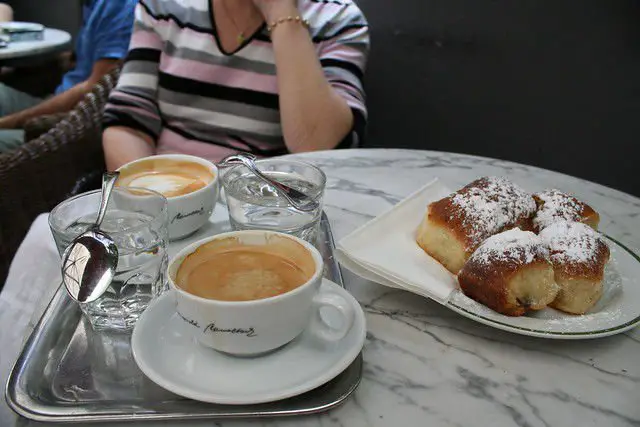
Dorotheergasse 6, 1010 Wien
Tel. + 43/1/512 82 30
You can also check their website for directions.
Cafés in Graz
Café Schwalbennest
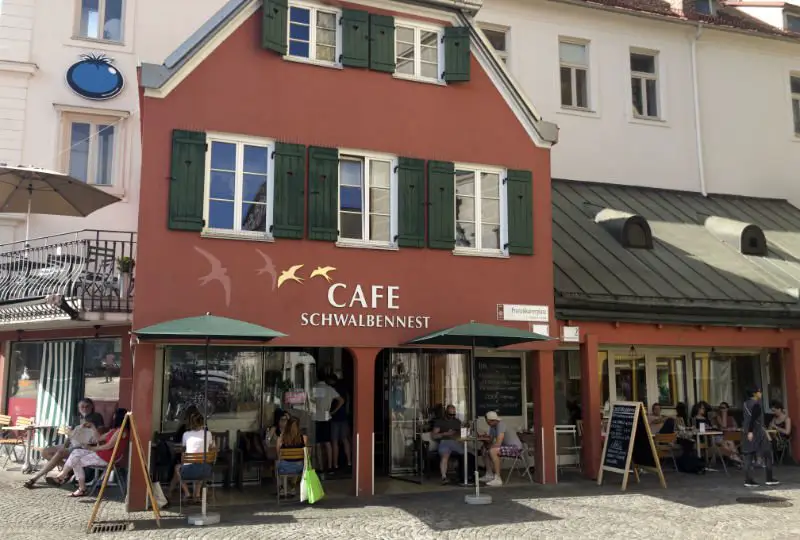
The perfect place to enjoy a sunny afternoon with Austrian coffee specialties and homemade scrumptious cakes. These cakes are so incredibly good, and people know it, so don’t be surprised when they are selling out quickly.
The café is conveniently located in the center of Graz, making it the perfect spot to take a break from a sightseeing walking tour of charming Graz.
They have indoor as well as outdoor seating, but my favorite spot is the second-floor balcony, where you can enjoy a nice view of the nearby river Mur.
Please note that they are closed on Sundays and Mondays.
Franziskanerplatz 1, 8010 Graz
Tel. +43 316 818892
You can also check their website for directions.
